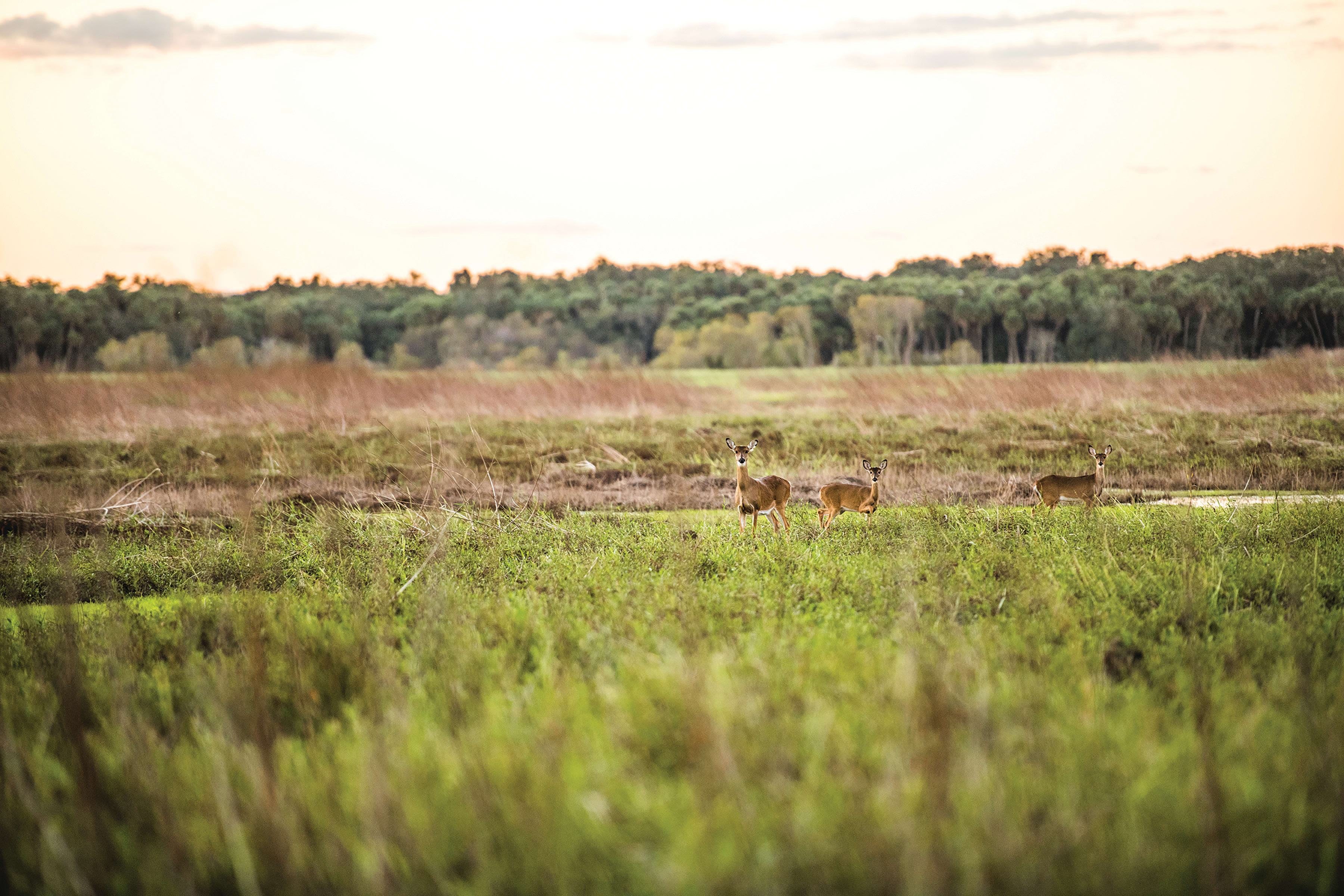Rural Hi Hat Ranch Gets Closer to Becoming a Major Development

Sarasota’s Hi Hat Ranch is one step closer to turning nearly 10,000 acres of green space into a development that could house almost 30,000 people.
Sarasota County commissioners voted Wednesday to approve a comprehensive plan amendment and ordinance that will pave the way for a mixed-use community on Hi Hat Ranch planned to have 13,081 dwelling units, 450,000 square feet of commercial space, a high school, K-8 school and regional sports complex. The decision was unanimous.
Commissioners heard from at least 20 speakers at Wednesday’s meeting, most of them opposed to the potential development. Although it took more than an hour for all of them to speak, it took less than 10 minutes for commissioners to discuss their decision and vote.
“I’m surprised that their land has been bare as long as it has. But if you own land from Fruitville to Clark Road, something is going to be [built] on that, and the build-out is from now until 2056,” says Commissioner Nancy Detert. “A lot will happen from now until then.”
The approved master development order serves to outline the type and structure of development. But the comprehensive plan amendment affects how the land is designated under the county’s 2050 Plan. Commissioners voted to change the land use of 1,258 acres in the northeastern portion of Hi Hat Ranch from “hamlet” to “village.” That increases the allowable density from a maximum of one dwelling unit per acre to a maximum of five or six dwelling units per acre.
Landowners and county staff say that the development’s proposed density—13,081 dwelling units that will sit on a total of 9,960 acres, a little less than half of which is developable—still follows the hamlet’s maximum density despite the land use change. James Turner, one of the owners of Hi Hat Ranch, noted in a presentation to commissioners that he and his team worked to seek guidance from neighbors and the community in a way he said was “really unprecedented.”
“We’ve really tried very hard to seek community input and the plan has changed a good bit because of that input for the better,” Turner says. “It is not an effort to get an increase in dwelling units. We will have the same number of dwelling units on Hi Hat as we would have in the hamlet scenario as we would in the village scenario.”
But environmentalists say that the development is still in flux and the allowable density could lead to as many as 25,746 dwelling units on the land—almost double the planned total.
“It’s a tremendous change,” says Becky Ayech, president of the Old Miakka Community Club. “The overall density isn’t what we’re talking about—what we’re talking about is the allowable density. Mr. Turner will not be the developer. We do not know what the future developer will come in and ask for.”
Attorney David Guest, the longtime managing attorney for environmental law nonprofit Earthjustice’s Florida regional office, says the decision completely invalidates the purpose of the land’s previous hamlet use.
“The hamlet idea is a transitional idea between villages and the rural area,” he says. “What you’re doing is basically taking that away.”
He also countered county planners’ analysis that the land had minimal environmental value.
“This land is actually agricultural,” he said. “We submit that it’s a really important use economically and ecologically.”
Development is planned for years in the future. County documents put the buildout date in 2056. And developers will have to rezone the land—in as many as five increments—before anything can be built.



